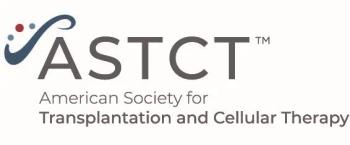
Relapsed, Refractory Myeloma Has Indirect Societal Costs
Patients with relapsed or refractory multiple myeloma experienced significant indirect social costs from their disease, in addition to the direct costs.
Patients with relapsed or refractory multiple myeloma experienced significant indirect social costs from their disease, in addition to the direct costs, according to the results of a study
These indirect costs included things like work absenteeism and unemployment.
“This report confirms and expands upon previous studies documenting the direct and indirect cost of multiple myeloma to society,” wrote Don Robinson, Jr, of Janssen Global Services in Raritan, New Jersey, and colleagues. “The cost of this disease to society is clearly substantial in ways that have not been fully counted.”
According to the study, the direct costs of relapsed or refractory myeloma have been well documented. However, healthcare payers continue to seek ways to offset costs from therapies that improve clinical outcomes but challenge budgets. With this analysis, Robinson and colleagues wanted to identify direct and indirect economic factors related to relapsed or refractory disease, as well as explore relationships between clinical, economic, and health-related quality-of-life assessments.
The study included 263 patients with relapsed or refractory myeloma. The researchers used information from an economic questionnaire, and clinical and health-related quality-of-life data from a multisite international study. All patients had relapsed from or become refractory to at least one prior line of therapy.
Moderate to severe pain was reported by 30.4% of patients, and 66.4% reported moderate to severe fatigue. At baseline, 41.8% of patients reported having at least one disease-driven hospital visit in the last 6 months and 71.1% reported a visit to a specialist within the last 3 months. Additionally, 9.0% of patients reported disease-driven urgent care visits and 5.3% reported a home nursing visit in the prior 3 months.
About 10% of patients were working at baseline, with most of these patients working a full-time schedule. However, more than one-third of these patients (37%) reported at least 1 day of disease-driven absenteeism during the prior 4 weeks. About 1 in 5 caregivers had also missed at least 1 day of work in the prior 4 weeks in order to help patients.
Among those patients who were not working at baseline, 48.2% reported that it was because of their relapsed/refractory myeloma.
The researchers also looked at data to help clarify the effect of tumor response on medical utilization. Data from multivariate modeling showed that lower hospitalization was associated with a major tumor response (P = .05).
“The impact of overall response on non-protocol hospitalization reduction was consistent across all analyses and statistically significant among two of three, which is strongly suggestive given that the study was not powered to show statistical significance for any economic endpoint,” the researchers wrote. “At the very least, these data suggest trends or estimates of the direct and indirect financial impact of relapsed or refractory multiple myeloma to payers and society.”
Finally, the researchers noted that the patients in this study were relatively early in the course of their disease. Therefore, “greater direct and indirect cost-offsets may be realized in the frontline or even smoldering myeloma setting.”
“Innovative treatments which substantially elevate major tumor response rates may have definable direct (medical) and indirect (social) economic benefits that accompany the health improvement,” they concluded.
Newsletter
Stay up to date on recent advances in the multidisciplinary approach to cancer.
















































































